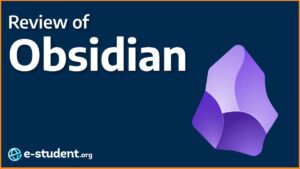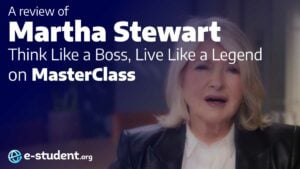- The Transformative Learning Theory is based on the idea that adult learning occurs when an individual tries to understand the meaning of their experience by challenging his unconscious view of the world.
- Transformative learning starts when an individual’s worldview is challenged. This causes an individual to gain new perspectives through self-reflection and use those perspectives to obtain and understand new concepts.
- Designing transformative learning aims to provide students with more opportunities to experience and practice true freedom of thought and understanding.
Everyone learns differently. We each have our own learning styles and preferences. Gaining an understanding of the different ways that students learn can enable educators to help them thrive and attain academic success.
One of the most influential learning theories in adult education is the Transformative Learning Theory. This theory is based on the premise that adults need to find meaning in their experiences which can lead to a deep and significant change in a person’s perspective and behaviors when they gain new information.
The theory was first introduced in the 70s by Jack Mezirow, a sociologist at the University of Columbia conducting research on adult women who went back to school after a long hiatus. He wanted to find out what effects this return to education had on their academic achievement.
Over the years, the Transformative Learning Theory has been applied in various contexts including higher education and sustainable development. Today, we’ll take an in-depth look at this theory, its advantages, and how it can be used by teachers and students to achieve their full potential.
Table of Contents
What is Transformative Learning Theory?
The Transformative Learning Theory was developed by Jack Mezirow in 1978 based on a study he conducted on adult learning. According to the results of his initial research, the adult women did not use their old knowledge to understand new concepts. Instead, they questioned what they already knew when they were exposed to new information. In addition, they evaluated things from a new perspective, which helped them obtain new insights and information, reframing their beliefs and assumptions to understand the world as it is today.
Based on these results, Mezirow theorized that experience, critical reflection, and dialogue or discourse can create learning opportunities that can lead to the acquisition of new information. He believed that, instead of relying on explanations provided by an authority figure, adults must think autonomously and facilitate their own learning. They need to avoid following the dictates of society and culture, simply accepting the status quo. Instead, their convictions should be based on the meaning and their interpretations of their personal experiences.
That all sounds good – but what does it actually mean? Basically, Mezirow’s view was that everyone has an established view of the world – what we think and feel about ourselves and our abilities, society, the world, and knowledge. These “frames of reference” come from or are influenced by our upbringing, education, and life experiences.
Frames of reference are composed of two parts – habits of the mind and points of view. Habits of the mind are the assumptions, beliefs, and values that influence the way we think, feel, and act. These habits of the mind can be deeply ingrained in us, which affects how we interpret the meaning of our experiences. These are not easily changed. One good example of this is nationalism and the feeling of superiority of one’s ethnicity. Points of view are how we express those habits of the mind in actual situations.
Transformative learning occurs when an individual’s existing frames of reference are challenged, specifically when an individual undergoes a “disorienting dilemma” or life crisis. This dilemma leads to an examination of these assumptions and beliefs. We start to question their validity. Does your conviction, which you have had since childhood, still hold true now that you are an adult?
During self-reflection, we also carefully examine our biases and discover alternative perspectives. If the frame of reference is no longer valid, then the individual undergoes a mental shift or a deep change in perspective. This change in the individual’s worldly perspective is expressed through action – a change in behavior or lifestyle.
So how does this relate to learning in the more conventional sense? To put it more simply, when an individual gets new information, he or she can examine their past ideas and understanding (a.k.a. critical reflection!) and shift their worldview based on their new perception. With transformative learning, a person can experience true freedom in both thought and understanding.
According to Mezirow, transformative learning focuses on two types of learning – instrumental and communicative learning. Instrumental learning concerns problem-oriented or task-oriented learning. Here, students need to identify and evaluate cause-and-effect relationships of events or situations.
Communicative learning, on the other hand, is focused on improving the learner’s ability to communicate his or her needs, desires, and feelings. Both types of learning are crucial for transformative learning to happen.

The phases of transformative learning
Mezirow identified nine phases involved in transformative learning. Transformative learning is viewed as a journey based on the results of his research on the women who went back to school.
1. Disorienting dilemma: This occurs when the learner discovers that his belief or assumption may not be true or accurate, challenging his current mindset. This “a-ha” moment is the spark that ignites transformational learning.
Example: A student doesn’t like online learning because it’s not as fun as being in school
2. Self-examination: Once challenged, the student will start to examine his current beliefs and assumptions. It is during this phase that the student will analyze past experiences and how they connect to the distorted dilemma you are currently facing. The student will see that there are other perspectives that they should consider.
Example: While the student is resistant to online classes, they realize that where they are doesn’t really affect their learning.
3. Critical Assessment: During this phase, the learner looks at all his previous assumptions, reviewing them to see which ones are no longer valid or accurate.
Example: The student realizes that there are benefits from online learning and questions why they had such negative thoughts about it before.
4. Recognition of Shared Experiences: During transformative learning, the learner accepts that he or she is not the only one who has gone through this kind of shift in mindset. This kind of experience happens to others as well.
Example: The students talk about their experiences in online classes with friends and realize that others used to have the same thoughts. When they learn about this shared experience, they start to feel a sense of community.
5. Exploring options for new behavior: While the learner may not be sure about his new beliefs or perception, he will try out new roles and actions that fit their changed worldview.
Example: The student starts to look for ways to make online classes more fun and effective. They may even share their discoveries with their classmates.
6. Planning a course of action: After understanding that certain previous beliefs and assumptions were wrong, the learner can focus more on setting a plan to move forward and gain a better understanding of a new concept.
Example: The student starts to create a plan that will implement the strategies they discovered on how to study from home more effectively, such as creating a daily study schedule.
7. Acquiring knowledge and skills: The learner becomes proactive in gaining knowledge and resources on how to fully enhance their learning.
Example: The student learns how to use different software that will help them become more effective online learners.
8. Experimenting with new roles: The learner actively tries to understand and apply the new concepts that he or she has learned.
Example: The student learns how to adjust their daily routine to become more efficient. They know consider online classes to be fun and effective.
9. Reintegration: The learner fully incorporates the reframed perspective into their life, changing their worldview.
Example: The student now believes that online classes are better, actively dispelling any negative thoughts and myths about online learning. They also encourage the school to start offering online classes permanently.
Benefits of Transformative Learning
- Develop Critical Thinking: Encouraging students to reflect on their current perspectives as well as alternative perspectives can help them develop analytical skills and allow them to judge based on evidence rather than emotion.
- Promoting Self-Awareness: One of the key elements of this theory is critical reflection which requires the learner to analyze their experiences, beliefs, and biases. Learners who have increased self-awareness of their assumptions and perspectives become more open to new ideas and perspectives.
- Develop Social Responsibility: Transformative learning teaches us to be more inclusive and discriminating. It also teaches us how to look at new meaning structures and perspectives with an open mind. We become more sensitive and accepting of different cultures, values, and issues.
- Boost Self-Confidence and Self-Esteem: Transformative learning helps us develop the ability to understand ourselves and develop personal growth. These, in turn, help increase our emotional well-being.

How can an educator foster transformative learning?
Educators can facilitate transformational learning by designing more effective learning experiences. As a teacher, you will need to create a learning environment where your students feel safe to express themselves and share their thoughts and experiences. Then, you need to create opportunities where their existing frames of reference are challenged. Present content that introduces new concepts and opinions, ones that conflict with ideas and/or opinions they currently have. This could be a picture, story, or guests that don’t quite fit their current worldview. For example, give them articles that offer contrasting views. Or you could set up an event where students can meet a politician who holds a different viewpoint.
You will also need to encourage your students to reflect, guiding them in identifying assumptions and biases that influence their perspective. Help them learn how to redefine or look at problems from a different perspective. Cite examples from your own personal experiences on how your understanding shifted due to self-reflection.
Facilitate discussions among your students, allowing them to work through the new concepts and/or opinions. This could be small group discussions or actual debates. More importantly, find opportunities that will allow your students to apply their new insights and skills as well as look for more learning opportunities that will foster perspective transformation.
None of this is easy, and some would argue that it has become even more difficult in recent years, with students and adults becoming more fixed in their belief systems and much-publicized incidents of students shouting down invited speakers holding different political opinions.
How students can apply the Transformative Learning Theory
Transformative learning goes hand in hand with self-reflection, self-awareness, and a readiness to experience a transformation. As a student, you need to learn how to push through discomfort and always keep an open mind. You also need to learn how to look at ideas and opinions from a different perspective. Don’t rush to defend your perspective. Instead, actively participate in discussions, ask open-ended or probing questions, and take part in workgroup situations.
Analyze your past experiences and how they influenced your current beliefs and assumptions. Do the current facts match with what you previously believed to be true? Once you accept a new perspective, look for opportunities where you can act on your newly found convictions. Obtain practical experience to reinforce your new knowledge.

Conclusion
By understanding the core principles of the Transformative Learning Theory, you can facilitate learning experiences that challenge the current mental framework of learners, encouraging them to engage in critical reflection and dialogue, which can lead to a change in the way they think. Whether you’re a student or a teacher, this theory can be used as an effective tool to achieve independent thinking and personal growth. This is – arguably – more important than ever in today’s world.



